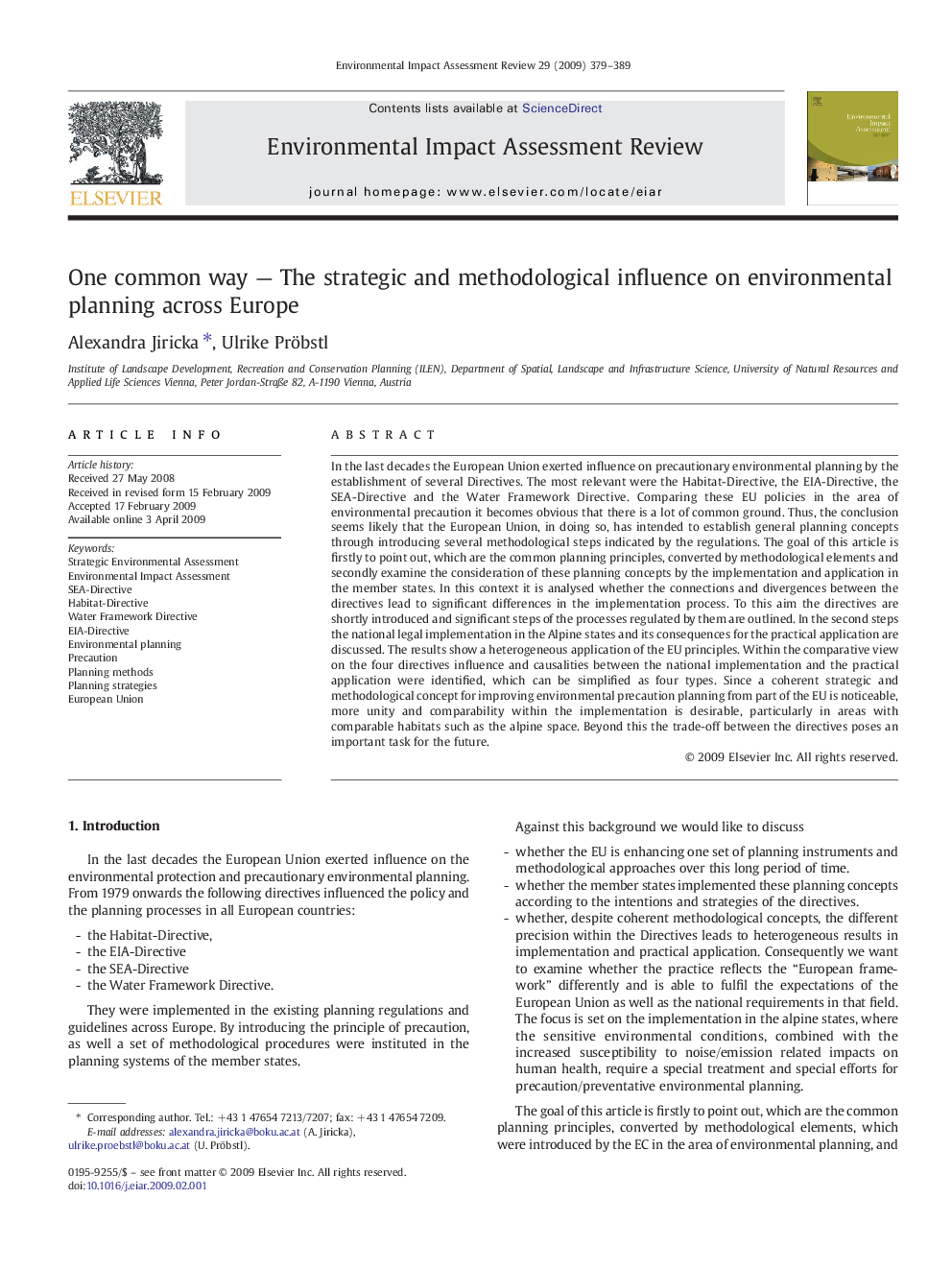| Article ID | Journal | Published Year | Pages | File Type |
|---|---|---|---|---|
| 1053203 | Environmental Impact Assessment Review | 2009 | 11 Pages |
In the last decades the European Union exerted influence on precautionary environmental planning by the establishment of several Directives. The most relevant were the Habitat-Directive, the EIA-Directive, the SEA-Directive and the Water Framework Directive. Comparing these EU policies in the area of environmental precaution it becomes obvious that there is a lot of common ground. Thus, the conclusion seems likely that the European Union, in doing so, has intended to establish general planning concepts through introducing several methodological steps indicated by the regulations. The goal of this article is firstly to point out, which are the common planning principles, converted by methodological elements and secondly examine the consideration of these planning concepts by the implementation and application in the member states. In this context it is analysed whether the connections and divergences between the directives lead to significant differences in the implementation process. To this aim the directives are shortly introduced and significant steps of the processes regulated by them are outlined. In the second steps the national legal implementation in the Alpine states and its consequences for the practical application are discussed. The results show a heterogeneous application of the EU principles. Within the comparative view on the four directives influence and causalities between the national implementation and the practical application were identified, which can be simplified as four types. Since a coherent strategic and methodological concept for improving environmental precaution planning from part of the EU is noticeable, more unity and comparability within the implementation is desirable, particularly in areas with comparable habitats such as the alpine space. Beyond this the trade-off between the directives poses an important task for the future.
